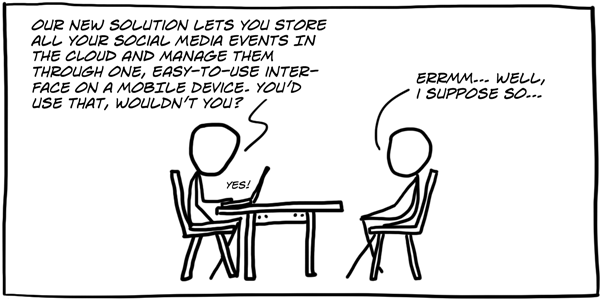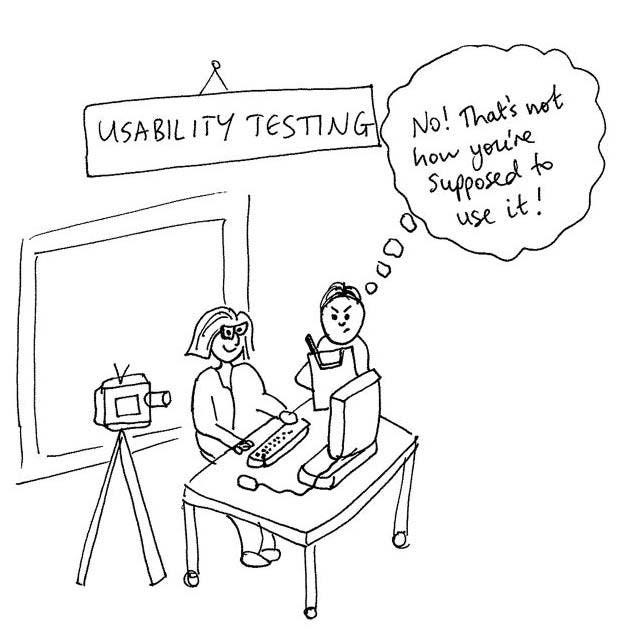The "User" Paradox: How to understand them better?
Issue 9🪜: How to talk to users + avoid talking about the solution with the users when trying to understand the problem + influence of users in early stage.
Hey everyone👋, welcome to the 21st newsletter.
What is it like to build something & nobody uses it? Well, I’ve been there. You put all your efforts, planning, and execution into something you dream about making successful. But it doesn’t get the slightest response as the expectation, we believe it's a failure.
But the truth is the problem isn’t in the idea, it’s the distribution & user understanding.
If we pay close attention to the users since day one, things might start unfolding sooner. Starting from breaking down each step to create an execution plan.
What the product is about - how would you describe it?
How will the product look like?
How will you market it?
How will you reach your goals?
But the biggest element that’s usually missing is “user”. Eventually, you are building it for them, so their part is huge.
Although, it’s hard to measure how much you need to understand the users, the research data you need & what actually influences the user’s mind - but it can be done. Even if the product is still under construction, how will you evaluate user data in the right direction? And then, what about once they start using the product?
Let’s explore every sector that our product is influenced by the users.
The Paradox
As much as user research is important it’s a complete paradox. You hear everyone talking about doing user research for the product at every stage, but most of them are of little to no use. Why? 👇🏻
If you are going back to the selective users - having few users give you feedback won’t help you collect the correct information. It’s like asking your best friend and you’ll get polite, and rather useless feedback.
Most of the users don’t know what they want - for example, nobody knows our problem better than us, but we don't know the solution, so we go to an expert and they guide us on how to solve it. That's the exact thing our users want. So asking them what they want, won’t help.
There are many solutions for one problem - If you sit & work on the problem you’ll see there’s no one best way to solve it and finding the one most of your users want will need you to target down your audience to a smaller segment.
Users use different types of emotions when they make purchases - something that is trendy, based on the needs, confused but still want to buy, don't have other choices, the product makes them feel superior, attached with the brand or person, or will buy when the price change. But in reality, they don’t go back, they forgot, and when asked why, they don’t really know.
Some problems aren’t visible until you show them what’s missing - what if your users cannot find what’s actually the problem? If they don’t understand their own problem, looking for a solution makes no sense.
Sometimes what users say, think or does will be completely different from what helps them figure out solutions to their problem or their actual experience with the solution. All this will be highly dependent on your observation and anticipation.

Interact with users: The validation stage
Your idea reflects the solution users want. For that, you need to understand the problem first hand, which can be done by talking to them and the best way to do so is by encouraging the users to talk more about their problem.
Ask them very specific open-ended questions:
“What are the problems they face when they place an order?”
“What are the common issues you face when you do X?”
“Tell me the last time you did Y. How was your experience?”
It’s true, at the early stage, it’s not (much) possible to gain a lot of aggregate information about users, you can only assume and predict. Thus, questions like these help you walk through the picture of the problem.
Once you get them talking, avoid talking about the idea or solution you have. You don’t have to make them talk about the solution but listen to the problem. When you dig down the problem you’ll see some loopholes, that’s where you’ll find the right solution. If you start talking about the solution first, they’ll be influenced by the idea which would lead to the sub-par solution.
Your goal at this stage is to understand the problem and find the right solution.
Interact with users: The building stage
Once you’ve passed the validation of the problem & solution stage, you are ready to build the product. What I personally consider & feel like I get more connected with the users and their problem is by “building in public”.
That doesn’t mean you have to share every aspect of the building process, but it’s more like connecting with the end-users and showing them, than talking about it.
See, now you know the problem, found the solution and now you’re building it. What’s better than bringing the users along? Not only it helps clarify the doubts (for ourselves) and build trust (in the users) but also accumulate users & market before the product is already out. You are showing them how much passionate you are about solving the problem - by talking with the users in real-time. It’s always amazing to learn about users problem when you’re building the product, you’ll find surprising things - what to include, which features will help, how to design, what attracts other users to use it etc. these feedback have a bigger takeaway. And you also might find how to expand in future.
At this stage, you’ll be playing with the vision and creating a prototype. Now, you also need to keep a balance on how much you need to listen to the users because the prototype is your vision and if you straightaway ask them about they feel about it they might struggle to get along.
The best thing you can do is invite them to a user feedback session. Talk to them when they use it. There is no louder action than sharing the product with them.
Let's take an example, suppose you’re working on the landing page of your product. That one single page has the power to convert thousands of visiting into paying customers. How would you pitch it? Look for centric answers:
Is the message on the landing page related to the problem & solution?
What will make the user click that button?
What will make them sign-up?
Does the image resonate with the product?
What CTA converts a user?
These factors are highly influenced by the users. Yet, to get an exact effect of it, it’s highly recommended to do a lot of experiments and understand user behaviour. There are plenty of analytical tools to help you with it but it’s advisable to ask for concrete facts to figure out what users are thinking.
There is no scientific mechanism to read your users mind. So, all we can do is predict the nearest, observe and anticipate (construct their worldview in your mind).
Interact with users: The product-using stage
Your user research doesn’t end once you’ve built the product. It will take to the next level.
As you ask your users to give feedback, many a time you’ll end up with a never-ending list of features to improve & include. Yet, the scary part isn’t picking the next new feature but knowing if you add new ones will the users switch?
I recently I had this experience using a product, they changed their plans and removed some features which was why I choose them. But after the changes the product wasn’t useful for me at all & I had to switch to the alternative.
Knowing if you have to include or remove something can adversely effort your user’s experience and is considered as a red sign. Rather talk to them, see if removing certain features helps you shape the product in a much better version which also keeps the users.
Enough feedbacks
Once you have a lot of users, your feedback will be diversified which will lead to conflicting feedback and a dilemma on what to do next. It only happens when users are trying to solve the same problem with different methods.
That’s where you have to think about how will your product grow & make judgments - helping you know how to scale the product. If “X” feature helps you get more users and “Y” feature helps a user get work done faster, go with the former one.

Competitors
Now, here’s another problem, which most founders make, underestimating existing solutions. Understand: why people use their product? What are the chances that users will switch?
Usually switching isn’t easy, even if a user shows interest in your product it’s hard for them to switch. As it requires additional effort and changes in the habits.
Do this even before you start building your product. Talk to users & see if any other solution works for them and if yes, then how? Is there any missing piece that would give them a better experience? Try to learn about your competitors from the users.
Your goal is to understand users in such a way that you can anticipate how they would react, use & talk about your product - creating a complete mental map of their behaviour. And for you to reach a clarity that this idea will fit best with the problem.
More to read:
Until next time! 👋
👋 PS: I’m Ritika founder, product marketer and advisor for early-stage startups, find more here or connect with her here. If you’re a first-time founder looking for curated resources, download here. If you enjoyed this post, read the past issues here. You can also promote your product in this newsletter.
A big thanks for reading & sharing!





